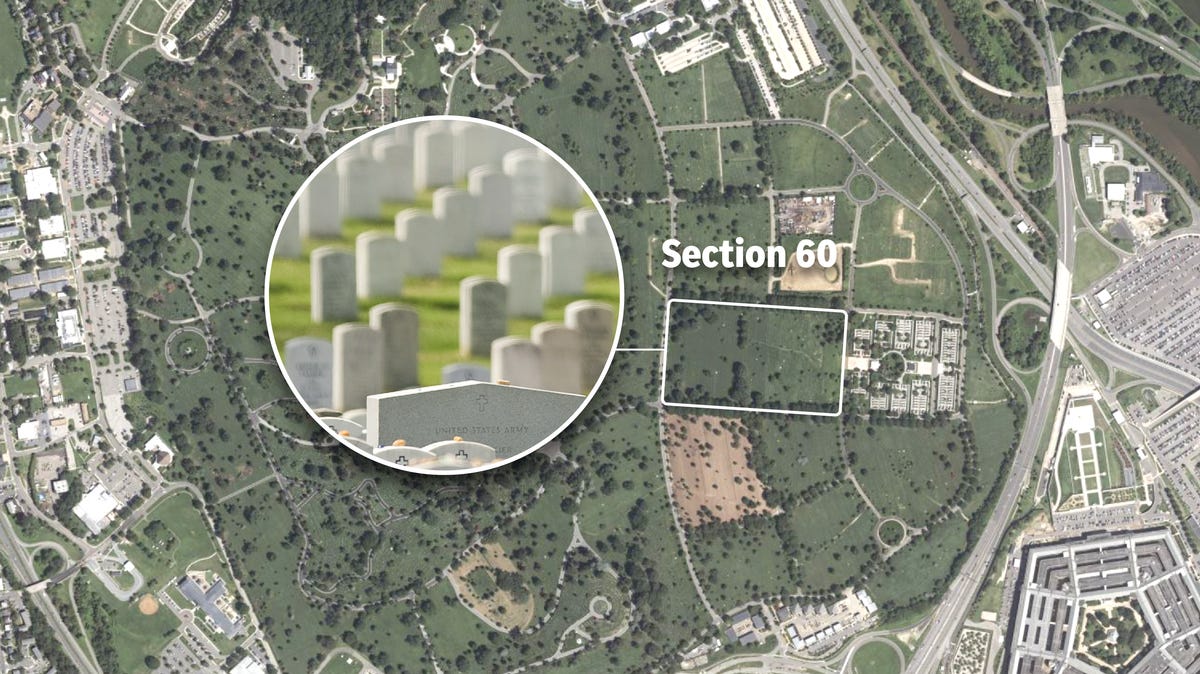What occurred during Trump’s visit to Arlington Cemetery? Understanding the photo scandal
The controversy surrounding former President Donald Trump’s visit to Arlington National Cemetery has escalated, following incidents where his campaign team reportedly clashed with a cemetery official who tried to stop photos from being taken in Section 60, an area that restricts photography.
Trump’s trip was in remembrance of the 13 U.S. servicemen who lost their lives during the Abbey Gate attacks that occurred during the Afghanistan withdrawal in August 2021.
A member of Trump’s staff reportedly pushed past the official in Section 60, enabling photography to take place, according to YSL News. Pictures showing Trump, family members of fallen soldiers, and others surfaced on social media, taken at military gravesites.
This led to criticism from military representatives, Democrats, and others who accused Trump of politicizing the cemetery, which they argued breaches federal regulations.
What actions did Trump take at Arlington National Cemetery?
On the day of his visit, Trump laid three wreaths at the Tomb of the Unknown Soldier, paying tribute to those who were killed in the Afghanistan suicide bombing:
◾ Marine Corps Sgt. Nicole L. Gee, 23, from Sacramento, California.
◾ Marine Corps Staff Sgt. Darin T. Hoover, 31, from Salt Lake City.
◾ The third wreath honored the total of 13 service members—11 Marines, one Navy corpsman, and one Army sergeant—who died during the attack.
Following this, Trump proceeded to visit Section 60 of the cemetery.
What is Section 60 at Arlington National Cemetery?
Section 60 is a 14-acre area within the cemetery primarily designated for veterans who served in the Iraq and Afghanistan conflicts.
Arlington National Cemetery falls under the authority of the U.S. Army, which requires permits for media and other organizations wishing to take photographs or record footage on the premises.
Although individual visitors can take photographs, federal law prohibits images or videos intended for “partisan, political or fundraising purposes.”
Activities that are not allowed include the presence of “photographers, content creators, or any individuals attending in support of a political candidate’s campaign,” as reported by YSL News.
What transpired in Section 60?
Trump visited Section 60 alongside Republican Utah Governor Spencer Cox, who is campaigning for reelection in 2024, and family members of the deceased who requested Trump’s presence, according to the Washington Post. Media representatives were excluded from this area.
During the visit, Trump placed flowers at the gravestones of two Marines, Sgt. Nicole Gee and Staff Sgt. Darin Hoover, as well as Army Staff Sgt. Ryan Knauss, with family members at his side.
NPR was the first to report that Trump’s campaign team was recording in Section 60. An official from the cemetery attempted to block Trump’s staff from entering this section; however, NPR reported that “the campaign staff verbally confronted and pushed aside the official,” citing an unnamed source familiar with the incident.
A senior Pentagon official informed YSL News that the event at Arlington was a minor conflict, and no charges were brought against anyone involved.
Trump’s campaign spokesperson, Steven Cheung, stated to YSL News that there was “no physical altercation as described.”
Three of the 13 U.S. troops who perished in the Afghanistan bombing are interred at Arlington, while the remaining 10 rest in cemeteries closer to their hometowns.
Contributing: Rachel Barber, Josh Meyer, Zac Anderson, Tom Vanden Brook, Dan Morrison, Kinsey Crowley, YSL News
SOURCE YSL News Network reporting and research; Reuters; arlingtoncemetery.mil

